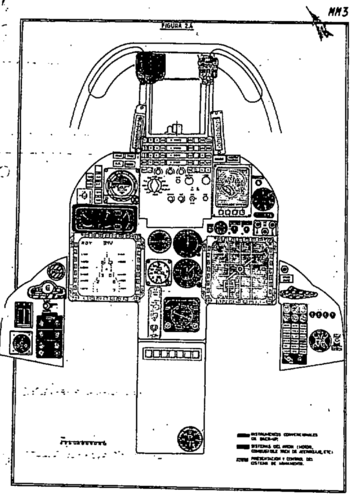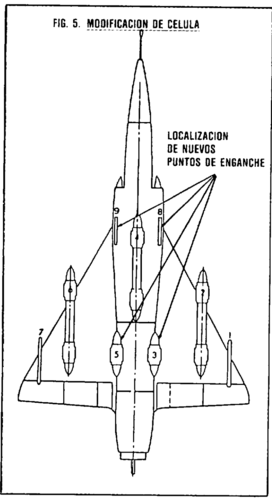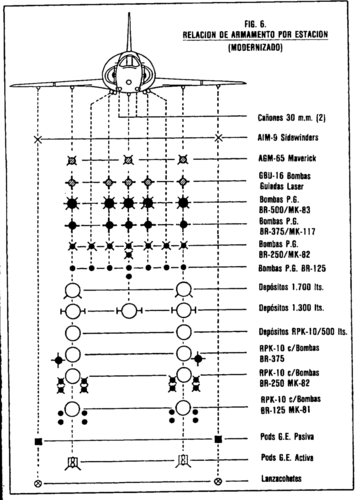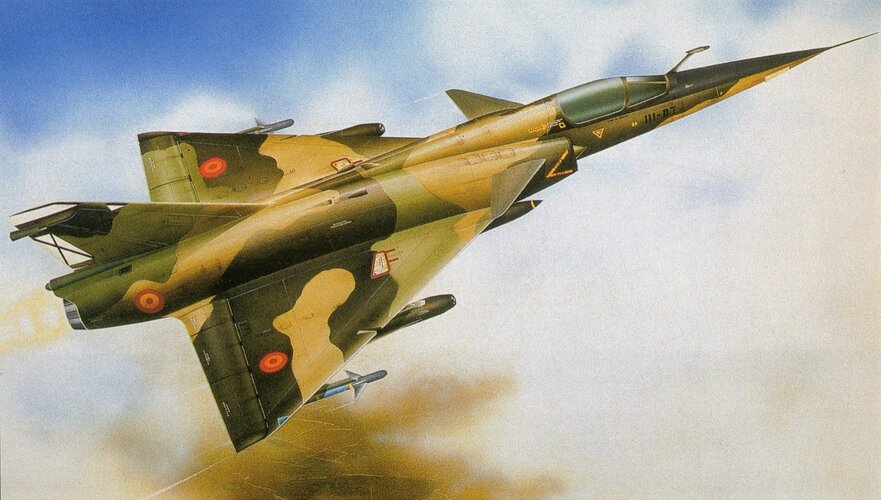NoBarrelRolls
"C'mon Mav! Do some of that pilot s#!t!"
I came across this interesting article published in the "Revista de Aeronautica y Astronautica" (number 591, March 1990) about an upgrade program proposed in the late 80s/ early 90s for the remaining fleet of Mirage IIIEE/ED, to keep the type in service up into the 2000s.
A little of backstory, the Spanish Air Force (Ejército del Aire or EdA in spanish) was in the middle of an rearming program. This included the substitution of their fleet of F-5, Mirage III and F-4 with the Eurofighter (known as EFA back then), F/A-18 Hornet and AX. After writing off the Phantoms and the delays in the EFA and AX program together with the Hornets not getting IOC until late 1990 they faced a gap in their attack capabilities.
For this reason, a decision was made to design an upgrade program for the remaining 23 Mirage III (designated C.11 in the EdA) that were assigned to the Ala 11 in Manises, Valencia.
The work would be carried by the company ATTORN (A consortium formed by the spanish companies CASA and Ceselsa) and included the following:
-A complete airframe overhaul, extending the service life to 2,500 hours
-Replacing the legacy Cyrano II radar with an Emerson-Electric AN/APQ-159.
-Improved avionics taken from other aircraft in service, this included: A
-YK-14 mission computer, INS, V/UHF, VOR/ILS, radar altimeter, and IFF from the F/A-18
- ADI, Chaff/Flares dispenser and RWR from the Mirage F1
-Encoding altimeter from the C-101
-Refueling probe, together with a single point pressure refueling system.
-four additional hardpoints in the fuselage, each capable of carrying 250 kg (500 lb) of armament
-Capability to deploy AGM-65 Maverick missile
-HUD, two MFD in the cockpit.
The total program cost was set at 23.500 million pesetas (if my calculations are correct, they should be more than 141 million euros)
Now the following the upgrades were left outside but they were considered for a second phase of the program, if additional founding was secure:
-Addition of canards plus strakes in the radome
-Applying the same upgrade to the two-seaters Mirage III ED
-Replacing the ATAR 9C with the more advanced ATAR 9K50
-Replacing the Martin-Baker MK-4 ejection seat with the zero-zero type MK-6
A contract that covered the first part was signed on December 28, 1988 with the agreement that the last upgraded aircraft should be delivered by October 12, 1992.
What the article doesn't covers is the end of the program. The reality was that this probed to be to much for ATTORN, by July 1990 the Spanish Ministry of Defense delivered an ultimatum after not seeing any progress on the program.
This led to the suspension of the program and the review of the contractual conditions, which in turn led to CASA becoming the lead contractor with Ceselsa as a subcontractor. Thus lead to an uneasy situation where CASA in order to continue the program had to absorb ATTORN together with any expenditure already made by Ceselsa, which of course never happened.
The Ministry of Defense tired of this situation, canceled the program in August of 1991 after spending more than 6.000 millon pesetas (again, by my estimates 36 million euros) in it.
Here is the full article in case you are interest (pages 233 to 269): http://bibliotecavirtualdefensa.es/BVMDefensa/i18n/catalogo_imagenes/grupo.cmd?path=76371
And here is an artist representation of the upgraded Mirage III (sorry is the best picture I was able to find):

New instrument panel:

New Hardpoints in the fuselage (stations 3, 5, 8 and 9):

Refueling probe (looks similar to the one in the Mirage F-1):

If anyone would have more information or better pictures about this project, I would really appreciate it.
A little of backstory, the Spanish Air Force (Ejército del Aire or EdA in spanish) was in the middle of an rearming program. This included the substitution of their fleet of F-5, Mirage III and F-4 with the Eurofighter (known as EFA back then), F/A-18 Hornet and AX. After writing off the Phantoms and the delays in the EFA and AX program together with the Hornets not getting IOC until late 1990 they faced a gap in their attack capabilities.
For this reason, a decision was made to design an upgrade program for the remaining 23 Mirage III (designated C.11 in the EdA) that were assigned to the Ala 11 in Manises, Valencia.
The work would be carried by the company ATTORN (A consortium formed by the spanish companies CASA and Ceselsa) and included the following:
-A complete airframe overhaul, extending the service life to 2,500 hours
-Replacing the legacy Cyrano II radar with an Emerson-Electric AN/APQ-159.
-Improved avionics taken from other aircraft in service, this included: A
-YK-14 mission computer, INS, V/UHF, VOR/ILS, radar altimeter, and IFF from the F/A-18
- ADI, Chaff/Flares dispenser and RWR from the Mirage F1
-Encoding altimeter from the C-101
-Refueling probe, together with a single point pressure refueling system.
-four additional hardpoints in the fuselage, each capable of carrying 250 kg (500 lb) of armament
-Capability to deploy AGM-65 Maverick missile
-HUD, two MFD in the cockpit.
The total program cost was set at 23.500 million pesetas (if my calculations are correct, they should be more than 141 million euros)
Now the following the upgrades were left outside but they were considered for a second phase of the program, if additional founding was secure:
-Addition of canards plus strakes in the radome
-Applying the same upgrade to the two-seaters Mirage III ED
-Replacing the ATAR 9C with the more advanced ATAR 9K50
-Replacing the Martin-Baker MK-4 ejection seat with the zero-zero type MK-6
A contract that covered the first part was signed on December 28, 1988 with the agreement that the last upgraded aircraft should be delivered by October 12, 1992.
What the article doesn't covers is the end of the program. The reality was that this probed to be to much for ATTORN, by July 1990 the Spanish Ministry of Defense delivered an ultimatum after not seeing any progress on the program.
This led to the suspension of the program and the review of the contractual conditions, which in turn led to CASA becoming the lead contractor with Ceselsa as a subcontractor. Thus lead to an uneasy situation where CASA in order to continue the program had to absorb ATTORN together with any expenditure already made by Ceselsa, which of course never happened.
The Ministry of Defense tired of this situation, canceled the program in August of 1991 after spending more than 6.000 millon pesetas (again, by my estimates 36 million euros) in it.
Here is the full article in case you are interest (pages 233 to 269): http://bibliotecavirtualdefensa.es/BVMDefensa/i18n/catalogo_imagenes/grupo.cmd?path=76371
And here is an artist representation of the upgraded Mirage III (sorry is the best picture I was able to find):
New instrument panel:

New Hardpoints in the fuselage (stations 3, 5, 8 and 9):

Refueling probe (looks similar to the one in the Mirage F-1):

If anyone would have more information or better pictures about this project, I would really appreciate it.
Last edited:


